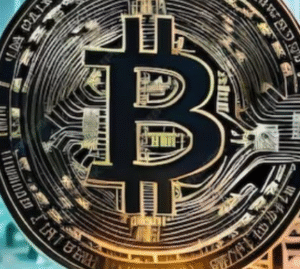$JPM $GS $BTC
#WallStreet #Regulation #FinanceNews #BankingSystem #TrumpAdministration #Cryptocurrency #MarketImpact #EconomicPolicy #FinancialReform #BankingRegulations #USMarkets #FinancialAnalysis
The regulatory framework governing the US banking system has, for years, been criticized for its inefficiencies, complexity, and the challenges it presents to both financial institutions and policymakers. This convoluted regulatory structure, which involves overlapping jurisdictions and authorities between agencies like the Federal Reserve, the Securities and Exchange Commission (SEC), and the Commodity Futures Trading Commission (CFTC), often results in redundant compliance requirements or create gray areas ripe for regulatory arbitrage. Under the Trump administration, calls for a rethink of this patchwork system intensified, with advocates pointing to the need for streamlined guidelines to bolster competitiveness among US financial institutions. Wall Street firms, already balancing global economic headwinds, view regulatory reform as an opportunity to reduce compliance costs and attract more capital to the US markets. However, critics argue that reducing oversight could heighten risks, particularly as new financial products such as cryptocurrencies emerge as significant players.
One of the primary consequences of the current regulatory setup is its impact on efficiency and capital deployment within the banking system. Large institutions such as JP Morgan Chase ($JPM) and Goldman Sachs ($GS) incur billions annually on compliance costs to align with various regulatory mandates, pulling resources away from innovation and growth initiatives. This fragmented system often results in conflicting obligations, such as adhering to both Dodd-Frank Act stress tests while simultaneously managing divergent state and federal requirements. A more cohesive approach to oversight could not only alleviate unnecessary burdens but also incentivize banks to lend more freely, potentially boosting the economy. On the other hand, proponents of tight regulation caution against sweeping deregulation, warning that looser rules could sow the seeds of another financial crisis by encouraging excessive risk-taking.
The rise of digital assets like Bitcoin ($BTC) and the broader cryptocurrency market further highlights deficiencies in the regulatory landscape. Cryptocurrencies operate in a space where existing rules are either ill-defined or inconsistent, creating both opportunities and challenges for market participants. While the SEC has classified certain digital assets as securities, others remain under the purview of the CFTC as commodities, leading to regulatory uncertainty that dampens institutional adoption. Under Trump, discussions around reducing the complexity of regulatory oversight gained momentum but failed to adequately address the burgeoning crypto market. If reforms continue to stall, the US risks losing its foothold as a leader in financial innovation, as companies and investors seek more crypto-friendly jurisdictions abroad.
The market implications of regulatory reform—or the lack thereof—extend well beyond Wall Street. For one, inconsistent regulations heighten operational risks for financial institutions, as evidenced by periodic compliance scandals even among industry leaders. Additionally, the potential for a fragmented strategy to spill over into global markets remains a key concern. With Europe and Asia moving swiftly to regulate emerging financial technologies, US policymakers face increasing pressure to modernize in order to remain a competitive force in the international economy. Ensuring a regulatory framework that fosters both stability and innovation will be crucial for long-term growth, both in traditional banking and within the rapidly evolving crypto sector. Whether this can be achieved without compromising consumer protections remains a contentious debate.







Comments are closed.